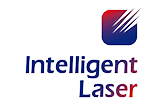Welding tracking, also known as joint tracking, refers to real-time tracking of the welding position before welding. This can not only correct the trajectory of the robot or special machine, but also change the welding seam formation by adjusting the voltage, wire feeding speed, or walking speed.
Robot welding cannot meet the actual needs of some products with lower precision, so it is necessary to add a robot welding tracking system. So what are the ways of robot welding seam tracking? Next, we will briefly introduce them.
Types of robot welding seam tracking
Robot welding seam tracking includes arc tracking and laser tracking. Thick plates usually use arc tracking, mainly oscillating welding. The deviation between the welding seam and the programming is calculated by contacting the two surfaces of the welding wire and the base metal, and then welding is performed by swinging. When the welding robot is used for the first time, it generally needs to be equipped with arc tracking detection function. The welding seam can be detected before welding, or the welding seam can be detected at the same time.
The starting point detection of the welding robot can be used alone, and can only detect the deviation position of the starting point and the end point. However, arc tracking can be detected at any position. If it is a right-angle welding seam, the start detection function is basically sufficient. For most thin plates with a thickness less than 2MM, especially spliced welding seams, lasers are used as welding seam tracking.
The laser tracking uses a front-end camera to monitor the laser scanning, obtain welding information, and feedback it to the robot controller. The robot will automatically modify the trajectory based on the data obtained during the welding process to complete the welding. The robot welding seam tracking arc tracking and start detection refer to the welding wire contacting both sides of the base material, the front part of the welding wire releasing low voltage, transmitting information to the controller through sensors, and then automatically obtaining the welding seam position through calculation. When the position of the workpiece changes, the welding seam position can still be obtained through arc tracking without reprogramming.
Therefore, arc tracking and start detection are only suitable for fillet welds or lap welds (plate thickness greater than 3 mm). However, laser tracking is mainly suitable for thin plates, and the accuracy is slightly higher than arc tracking. However, laser tracking requires adding a laser to the welding head, which will cause certain interference to the product. Therefore, the welding tracking system of the robot should be selected according to the actual situation of the product.
How does robot welding seam tracking work?
When the laser stripes are irradiated on the welding surface to form laser stripes, the lens on the sensor produces a cross-sectional contour of the weld on the photosensitive detector, that is, an image of the laser stripe that reflects the shape of the weld cross-section. The visual control of the laser stripe image extracts feature data such as the coordinates of the tracking point, the gap between the welding seams, the displacement, and the cross-sectional area. The visual system calculates the welding torch path based on the measured welding position information and transmits the path data to the robot.
To ensure that the welding torch is always aligned with the welding seam, the robot controls the running path in real time. At the same time, the visual system can also calculate the required welding parameters, such as welding speed, arc voltage, welding current, swing range, etc., based on the measured welding size data.
These welding parameters can be transmitted to the robot through Ethernet, and the robot can control the welding speed and swing of the welding torch, or control the power supply of the welding machine to adjust the welding parameters, thereby achieving adaptive welding parameter control.
